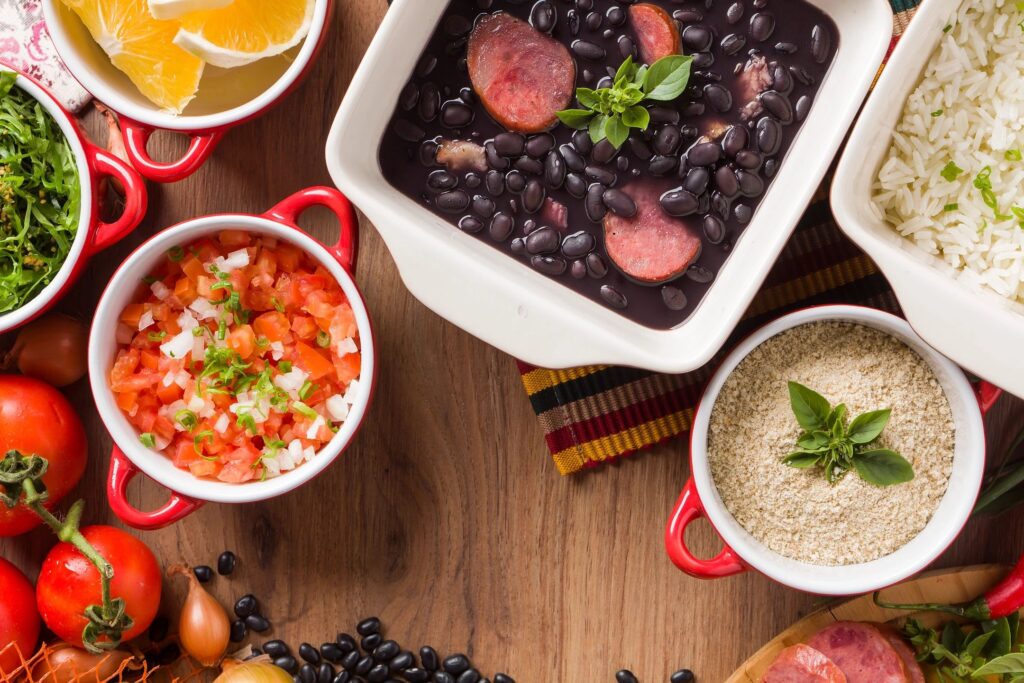
By Pamela Stern
Annually, September 15th through October 15th marks National Hispanic Heritage Month in the United States. Initially, the observance began as Hispanic Heritage Week in 1968 under President Lyndon Johnson and only later was expanded by President Ronald Reagan in 1988 to cover an entire 30-day period.
Hispanic Heritage Month begins in the middle of the month because on September 15th five Latin American countries all declared their independence from Spain. The countries that celebrate their anniversary of independence on September 15th are: Costa Rica, El Salvador, Guatemala, Honduras, and Nicaragua. Mexico’s independence is celebrated on September 16th and Chile celebrates its independence on September 18th.
The goal of Hispanic Heritage Month is to celebrate the history and many unique cultures and contributions Latinos have made to our country. And what better way to celebrate and show support for National Hispanic Heritage Month than by cooking up and serving friends and family some incredible Latin foods. The Spring Creek Sun would like to showcase some traditional foods to celebrate Hispanic Heritage Month.
Tortilla Espanola
Tortilla Espanola is a classic dish that is beloved throughout Spain. The name translates to “Spanish tortilla,” but you’ll also hear the dish referred to as a Spanish omelette or potato omelette. This combination of eggs, potatoes, and onions is easy to prepare and can be served any time of day.
A traditional tortilla Espanola is made with a filling of thinly sliced potatoes and sauteed onions enveloped by fluffy, beaten eggs. Some Spanish omelettes are thin, and some are thick and dense. There are many interpretations of the dish, which can be enjoyed hot or cold. Tortilla Espanola is served as a snack, a tapa, or even a main entree.
Empanadas
Empanadas are pastry shells stuffed with fillings and baked or fried to golden perfection. These crescent-shaped hand pies can be filled with a variety of savory ingredients or sweet fillings. In Argentina, empanadas are made with a flour-based dough and filled with meats mixed with peppers, onions, or olives. But in Belize, empanadas are made with a corn dough called masa and filled with beans, fish, or chicken.
Every country and region has a unique take on preparing empanadas, which is why this dish is so versatile.
Arepa
Arepas are unleavened cornmeal cakes that are fried, baked, or grilled. They can be served whole and topped with melted cheese and salsa fresca, but one of our favorite ways to prepare arepas is to split them open and fill them like sandwiches. You’ll see authentic arepas paired with a variety of toppings like cheese, cuajada (milk curds), beans, meat, or avocado.
Arepas originated in the pre-Colombian northern region of South America, which is present-day Venezuela and Columbia. Today, these simple but delicious corn cakes are a household tradition throughout Columbia and are eaten for breakfast, lunch, and dinner.
Tacos
Tacos need no introduction! This traditional Mexican food is beloved all over the world and is one of America’s favorite comfort foods. Authentic Mexican tacos were made with soft-shell corn tortillas and best eaten immediately. The hard taco shell was invented in the 1940s to create a more portable version of the taco that kept longer.
Stuffed Peppers
Stuffed peppers are popular all around the world, including Hispanic countries such as Spain and Mexico. The dish usually consists of a hollowed out or halved pepper stuffed with fillings like meat, rice, and vegetables. Once filled, the peppers are cooked and sometimes topped with cheese or sauces.
Elote Corn
Elote is a Mexican street food made with fresh, grilled corn on the cob. The corn cobs are charred over an open grill and coated with mayonnaise and Mexican crema (sour cream). Next comes a sprinkling of Tajin seasoning, followed by fresh cilantro and crumbled Cotija cheese. The elote is finished off with a squeeze of fresh lime juice.
Ceviche
Ceviche is a seafood dish that is popular in Peru, Ecuador, Mexico, and other Pacific coastal regions of Latin America. Consisting of fresh raw fish, citrus juice, chopped onions, salt, and cilantro, ceviche is a refreshing, sweet-savory dish.
Ceviche recipes vary slightly by location. This Hispanic dish might feature shrimp, or it could take the form of a ceviche “cocktail,” which is popular in Mexico. Ceviche cocktails are usually served in cocktail glasses and may come with tostadas and avocado.
Tres Leches Cake
Tres leches (three milks) cake consists of a sponge cake or butter cake soaked in three different types of milk: evaporated milk, condensed milk, and heavy cream. After the sheet cake is baked and cooled, holes are poked into the top with a skewer and the milk mixture is poured over top. The fluffy sponge absorbs the milk and cream, yielding a moist, rich cake.
Tres leches cake is popular throughout Mexico, Nicaragua, Panama, Cuba, Puerco Rico, Guatemala, Costa Rica, and many other Latin American countries. In Mexico, tres leches cake is served at weddings, birthdays, and other celebratory events.
Churros
Churros are long, sweet fried-dough pastries that are normally served with a dipping sauce of chocolate or dulce de leche. Churros are also served for breakfast or as a dessert at sit-down restaurants.
Churros are enjoyed throughout Hispanic and Portuguese-speaking countries, including Spain, Portugal, Brazil, Mexico, Colombia, Peru, and Argentina.
Bunuelos
Bunuelos are a fried dough fritter, or type of donut, that is shaped into a ball or a flattened disk and covered with cinnamon and sugar. They are perfect as a snack or dessert. They are enjoyed throughout Spain and Latin American countries.
In Mexico, anise is added to the dough and the fritters are served with a warm sugar cane syrup. The bunuelos in Uruguay and Argentina are also called banana fritters and are considered a special rainy day treat. Columbian bunuelos are dough balls containing white cheese curd, served with custard as a traditional Christmas dessert.
Hispanic foods represent rich cultures from many different countries. To celebrate this Hispanic Heritage Month, consider incorporating some traditional food into your meals.



